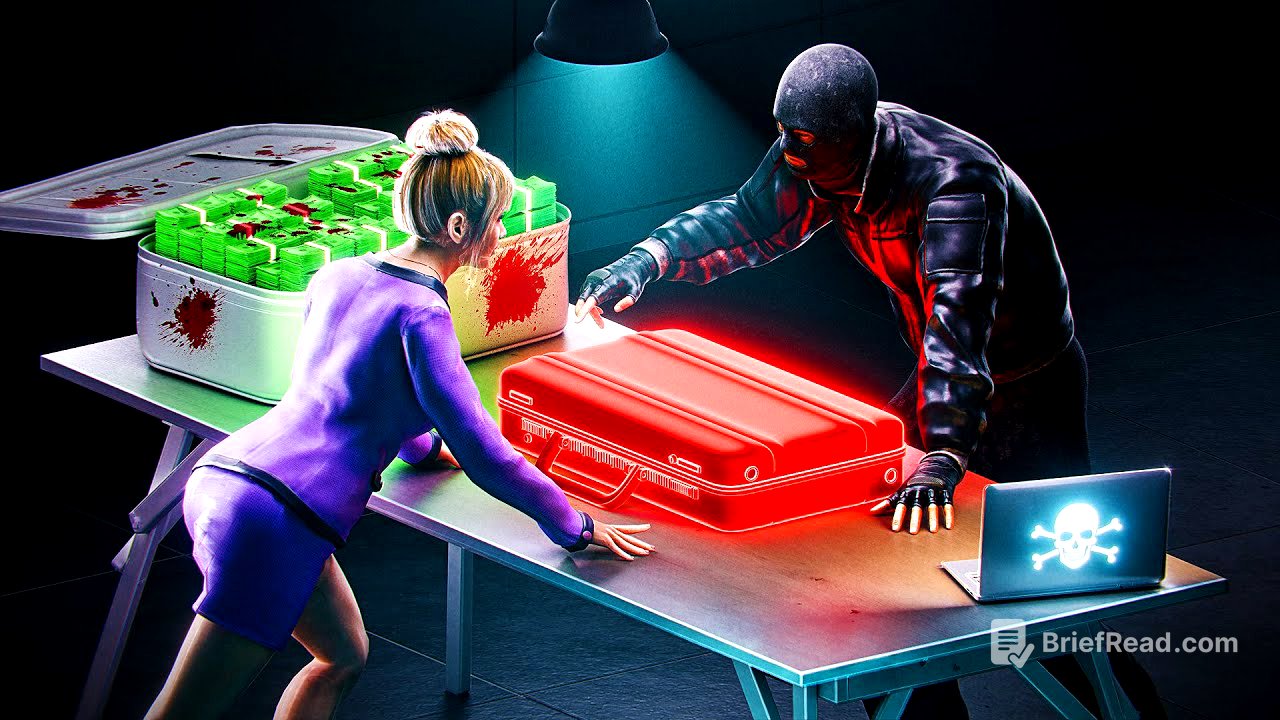TLDR;
This video explores the secretive world of zero-day exploits, which are vulnerabilities in software or hardware that are unknown to the developer and thus have no patch. It discusses the history of the zero-day market, how it evolved from hackers reporting bugs to tech companies to a lucrative black market where exploits are sold to governments and other malicious actors. The video also covers real-world examples of zero-day exploits being used in cyber warfare, such as Stuxnet and WannaCry, and highlights the potential dangers of hoarding these vulnerabilities.
- Zero-day exploits are unknown vulnerabilities in software or hardware.
- The zero-day market has evolved into a lucrative black market.
- Zero-day exploits have been used in cyber warfare, such as Stuxnet and WannaCry.
Introduction [0:00]
The video starts by posing a question of how the world might end, suggesting that it's most likely to occur by accident. It introduces the concept of a secret underground market where hackers exploit mistakes in software and hardware for profit, selling these exploits to various entities, including terrorists, dictators, and governments. The video also raises concerns about privacy in an increasingly connected world, questioning whether personal data is truly secure.
What is Zero-Day Exploit [1:43]
The video defines zero-day exploits as flaws in software or hardware that are unknown to the developer, leaving them with "zero days" to create a fix. These exploits are powerful tools for hackers, providing backdoors into systems. For example, a zero-day in Apple's iOS could allow someone to remotely access any iPhone undetected. There is no protection against them, as they are, by definition, unknown. While manufacturers eventually release updates to fix these vulnerabilities, significant damage can occur in the meantime. With the right zero-day exploits, hackers can breach any company or system, including critical infrastructure like military bases, chemical plants, and power grids.
The History of the Zero-Day Market [4:31]
The video explains that in the 1980s and 1990s, hackers would find bugs in software as a hobby and report them to tech companies like Microsoft and Oracle. However, these companies were unappreciative and viewed hackers as a nuisance, threatening legal action. This led to frustration and resentment among hackers, causing some to share bugs publicly online. In 2003, a security company called ID Defense saw an opportunity and began paying hackers for vulnerabilities, which they would then share with vendors for fixes. This gave birth to the zero-day market, where vulnerabilities could be sold for profit. Government agencies and contractors soon outbid ID Defense, offering higher prices for exploits on the condition of complete silence. Hackers often didn't know who they were selling to or how the zero-day would be used, leading to them being called "merchants of death." Leaks from Edward Snowden revealed that the United States was a major player in the zero-day market, with the NSA acquiring a vast library of backdoors into various systems.
The Cyber Arms Race [8:22]
The video details that initially, zero-day exploits were hoarded for espionage, but they have now become tools for cyber warfare, targeting factories, nuclear plants, power grids, and pipelines. Tech companies have shifted their stance towards hackers, now offering bug bounty programs to incentivize them to report vulnerabilities. However, zero-day brokers often pay significantly more, creating a dilemma for hackers. Zerodium, a zero-day broker, publicly lists prices, offering millions for exploits that can fully access Android or iOS devices. The video emphasizes that zero-day exploits are essentially cyber weapons of mass destruction.
Stuxnet: The First Cyber Weapon of Mass Destruction [10:16]
The video describes the Stuxnet attack in 2010 on Iran's nuclear program, where a sophisticated computer worm used four zero-day exploits to damage uranium centrifuges. Stuxnet spread through an infected USB drive and exploited vulnerabilities in Windows and printers to access the facility's network. The worm caused the centrifuges to overheat and self-destruct while reporting normal operation on the monitors. It is estimated that Stuxnet set Iran's nuclear program back several years and was a joint operation between the United States and Israel. Stuxnet was the world's first cyber weapon of mass destruction, leading to a cyber arms race with more buyers entering the zero-day market.
WannaCry: Ransomware Attack [13:21]
The video discusses the WannaCry ransomware attack in May 2017, which affected hospitals in the UK and spread rapidly worldwide. The attackers used a stolen NSA exploit called Eternal Blue to encrypt files and demand ransom in Bitcoin. The attack was traced back to the Lazarus Group, a hacker group connected to North Korea. A 22-year-old college dropout discovered a kill switch in the code and registered the domain name, stopping the malware from executing on new devices. While WannaCry caused billions of dollars in damages, things could have been much worse.
NotPetya: The Most Destructive Cyber Attack in History [17:12]
The video describes the NotPetya attack in June 2017, where Russia used a leaked NSA cyber weapon in Ukraine, causing over $10 billion in damages. Ukrainians were unable to buy groceries, access money, or monitor radiation levels at Chernobyl. Russia's deep access into Ukraine's systems could have been used for deadly purposes, but instead, it was used to send a message of control. The video notes that Ukraine's lack of interconnectedness at the time prevented even greater damage. Experts warn that as more devices become connected to the internet, the world is creating a larger attack surface. Despite these incidents, exploits continue to be hoarded, and the zero-day market thrives.









